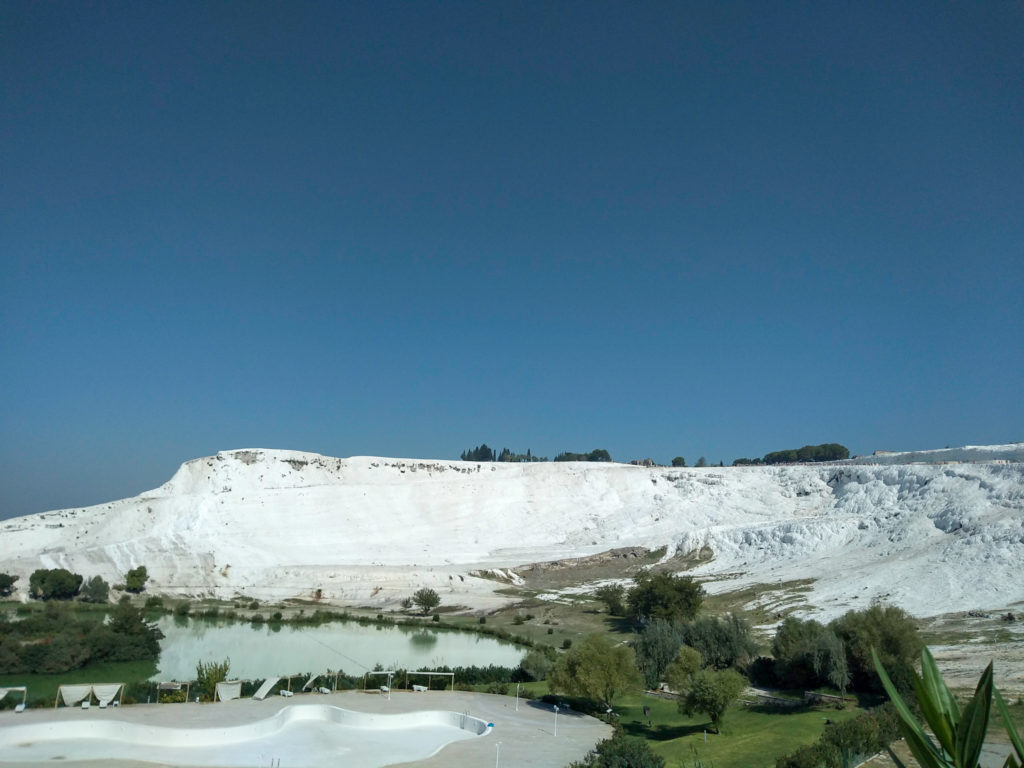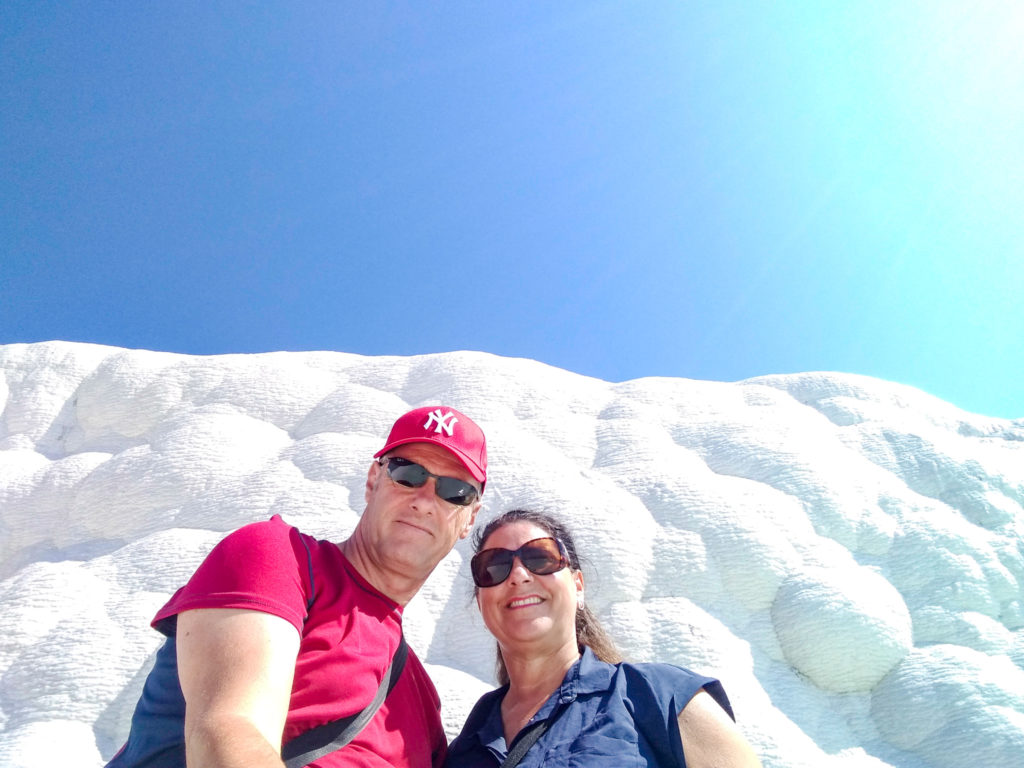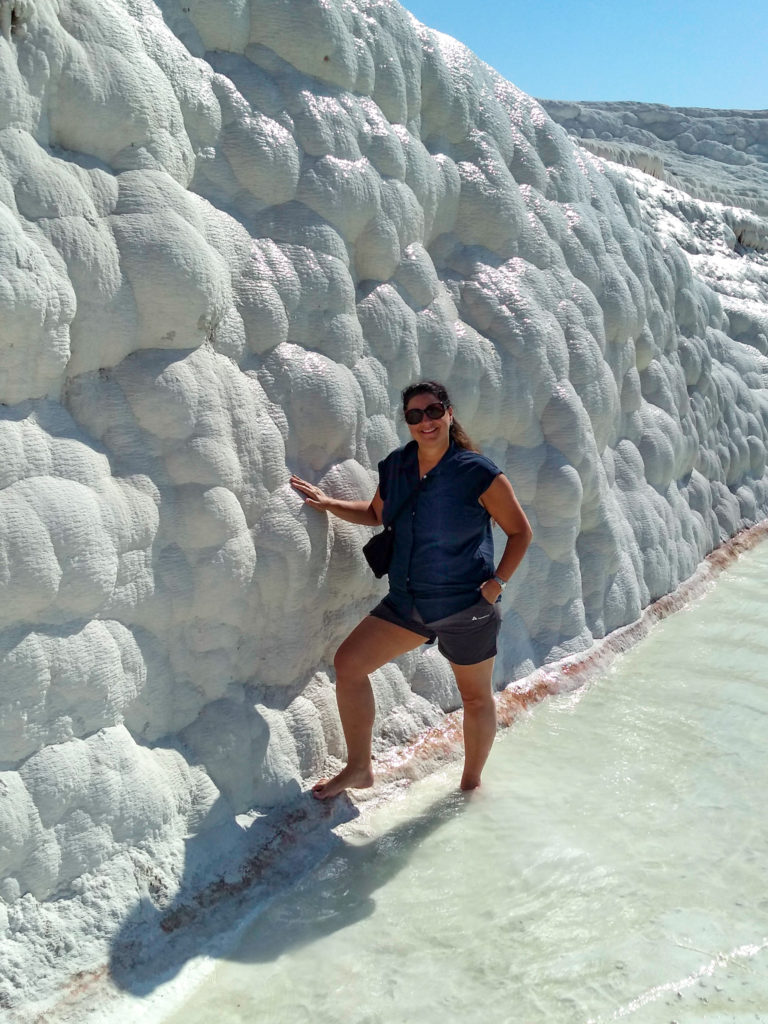“The Cotton Castle”.
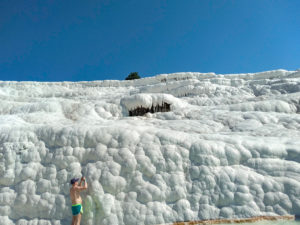
See photos
Where is Pamukkale?
The city of Pamukkale is located in the Menderes River valley in Turkey’s Inner Aegean region.
Getting there
ur journey from Istanbul to Pamukkale was completed by bus, with an overnight stop in Izmir, to break the journey.
Our accommodation
During our time in Pamukkale, we chose to stay at the Pinar Hotel, which we booked through Booking.com.
A charming small, family run hotel on the outskirts of the city. Facilities in the hotel include a restaurant, providing good traditional local food and a seasonal outdoor swimming pool.
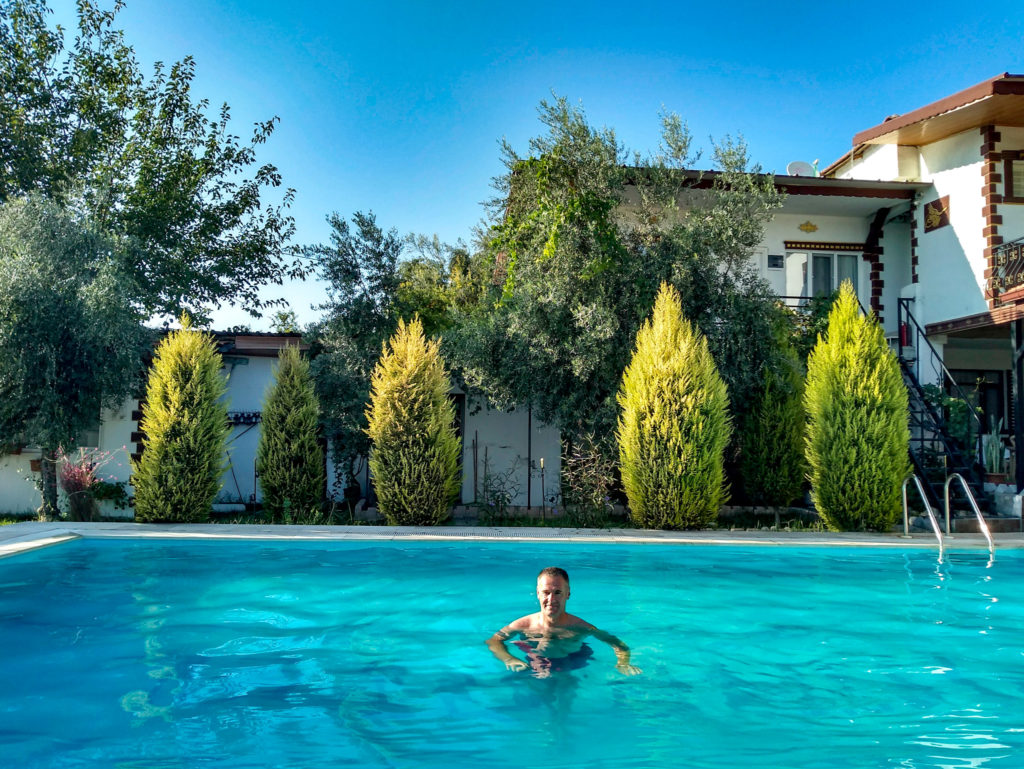
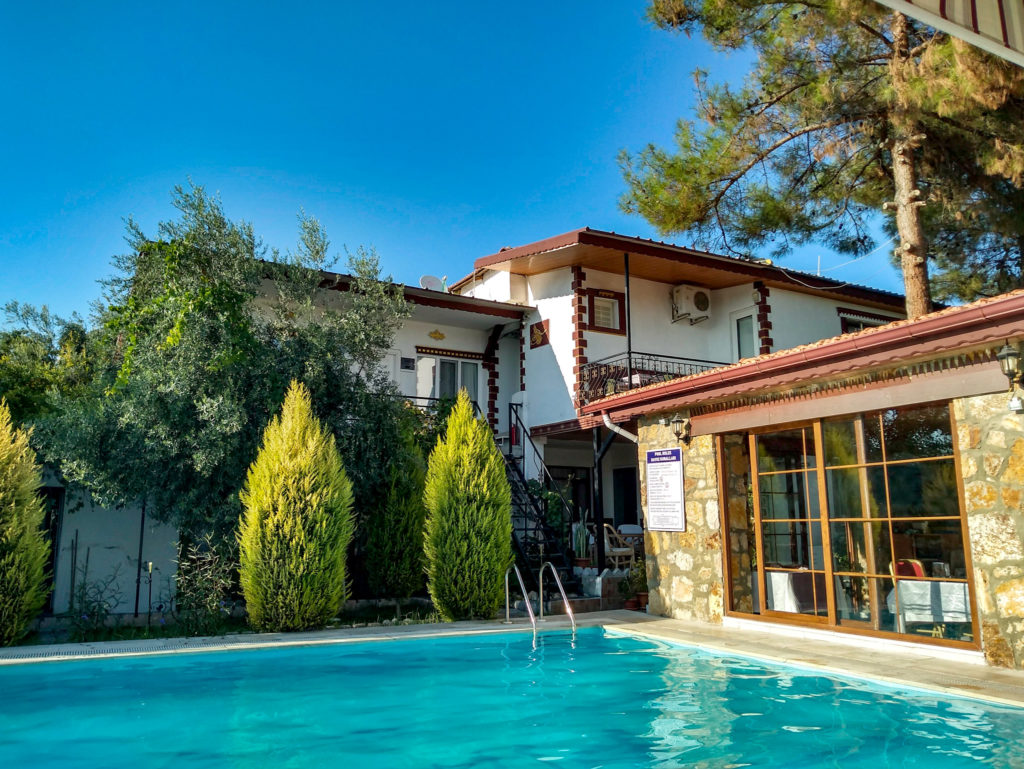
Places of interest
Pamukkale (Cotton Castle) draws tourists to the famous white terraces formed by the travertine sediment deposited by the waters from the hot springs. On top of the terraces sits the Ancient Hierapolis (Holy City).
Travertine Terraces
We specifically went to Pamukkale to visit the White Marvel. White travertine cascades, resembling frozen waterfalls beautifully draping down the mountainside. Terraces of approximately 17 shallow spring pools have been created by the waters of thermal springs reacting with the air.
Water saturated with minerals, reaches the surface and deposits calcium carbonate as a soft gel which eventually crystallizes into travertine.
Entrance
Entry into the site is by one of two gates. The North gate which is at the top of the hill, or the South gate which is at the bottom.
As we were staying in the city, the South entrance was an easier option for us. In our opinion, we think it was the better entrance to use. The views of the travertine terraces and pools as you make your way up the mountain are simply awesome.
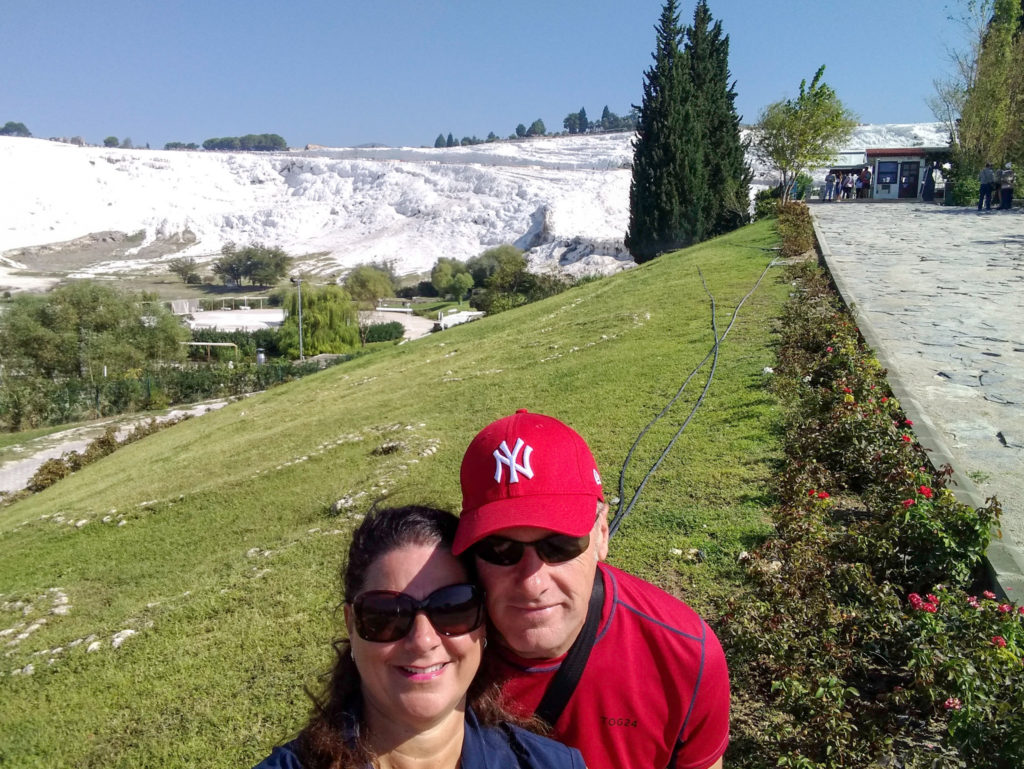
The entry fee is a bit on the steep side, but worth it. 60 Turkish Lira each allows you to visit the White Marvel terraces and pools. An additional cost for Museum entry and swimming in the Antique pools at the top. You do get to paddle in some of the travertine pools and you could lay in them if you so desired..
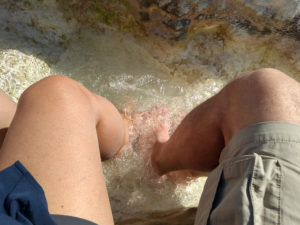

The walk from the South entrance is uphill all the way and as you enter the White travertine with the water flowing over it, you must remove your shoes and walk barefoot. Some patches can be slippery but the majority isn’t. There is a small footpath running up the mountain, which must be followed. The terraces are all currently off-limits, having suffered erosion and pollution at the feet of tourists.
The views are outstanding and at the top you have the added bonus of the remains of the ancient Roman city of Hierapolis, with the partial remains of the Theatre and other buildings.
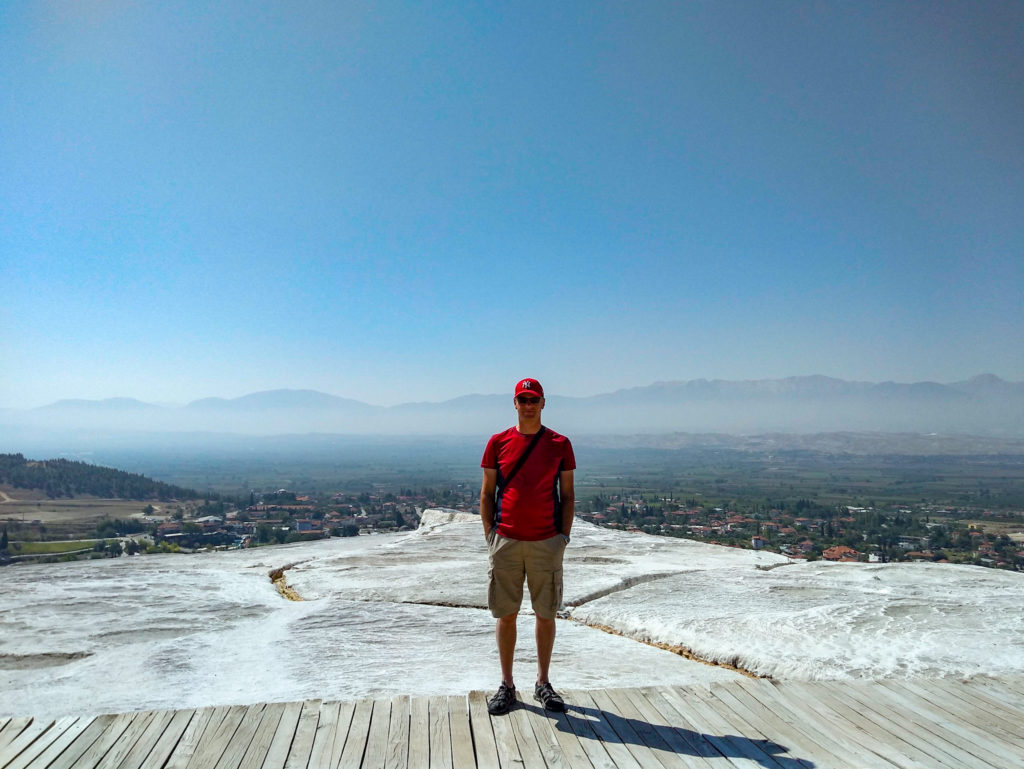
Ancient Hierapolis
Completely overshadowed by the beauty of the White Marvel, are the well-preserved Roman ruins of Ancient Hierapolis.
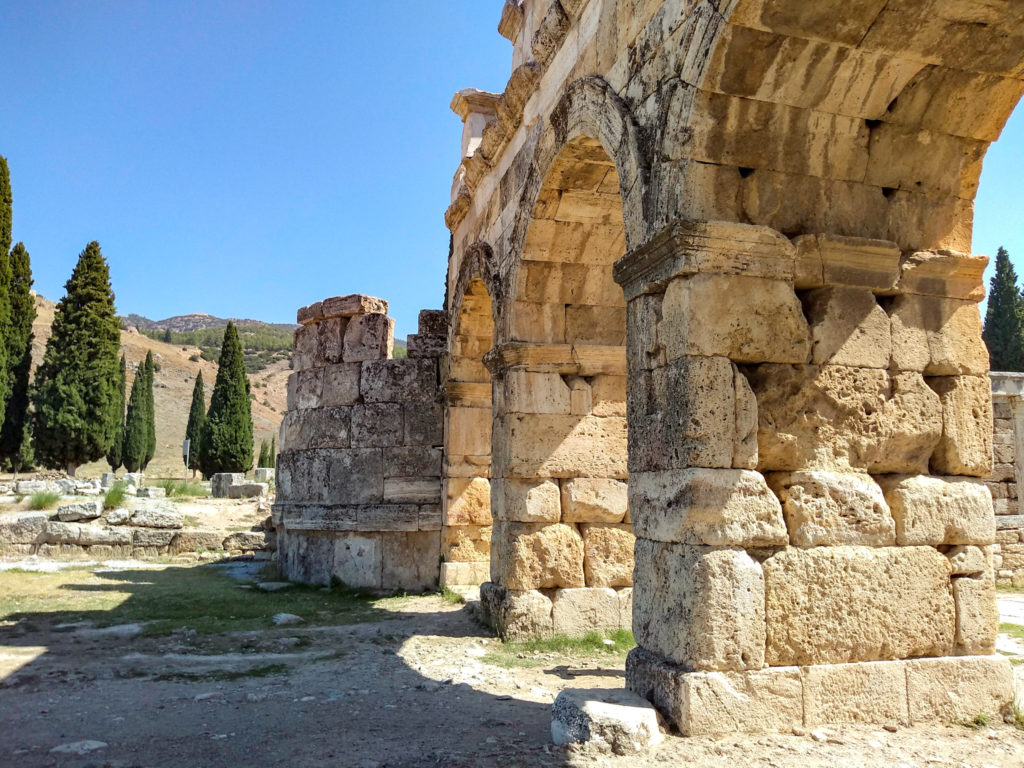
Unbeknown to us, at the top of the mountain, we found the remarkably underestimated and unadvertised ancient city.
A plethora of ancient structures dotted around the site. A leisurely stroll along the wooden boardwalk weaves you through these impressive ruins.
With plenty of notice boards, advising about each of the ruins, it is a journey through time as you walk through the monumental entrance gates and down the main street. Very easy to get lost in history and imagine what life would have been like in the heyday of the city.
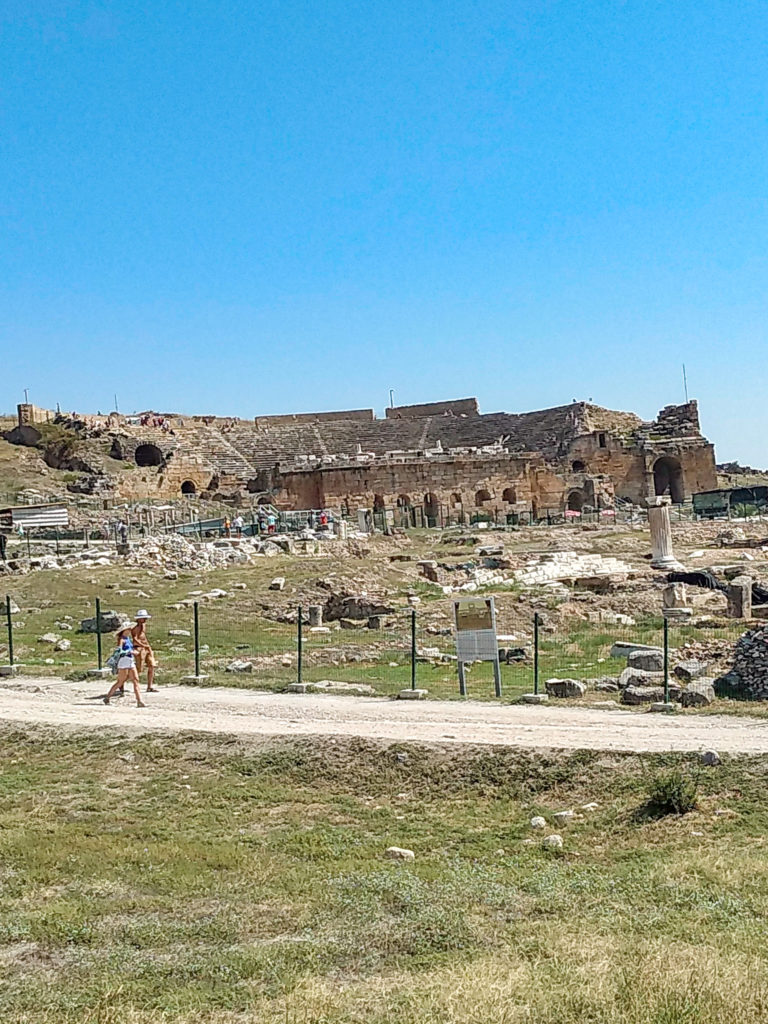
The Theatre is impressive, with its 91m long facade, the full extent of which remains intact and a capacity of 15000, it dominates the mountain top.
We took over 3 hours walking around the site. Ensure you have sun cream, sun glasses, a hat and water if you are going on a sunny warm day.

